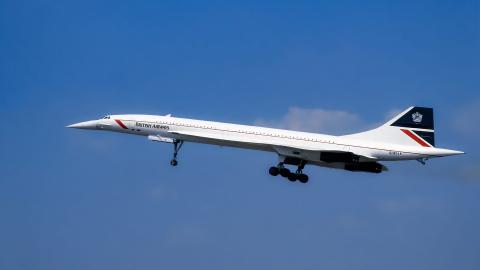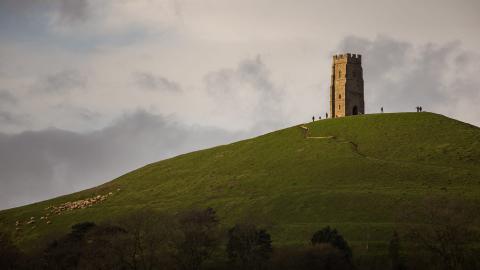Think 'the Blitz' and you’ll probably picture bolshy Cockneys keeping calm and carrying on in the rubble of London. Milkmen going about their daily round amid the blasted buildings of the East End. Hordes of people turning Tube stations into vast crowded dormitories. And the Queen Mum narrowly avoiding being blown up in Buckingham Palace. These are indelible images of British pluck, no question. But wait a minute – what about the rest of Blighty?
Well, the Luftwaffe certainly wasn’t guilty of any snobbish London favouritism. Other major cities were also subjected to earthshattering assaults from the air, and in series two of WW2 Treasure Hunters, Suggs is taking time out from Madness duties to join forces with military expert Stephen Taylor to unearth the wreckage of a Boulton Paul Defiant shot during series of devastating air raids that really don’t get the attention they deserve.
This was the Hull Blitz, and it was an apocalyptic ordeal for the north-east. Why was Hull targeted by the Germans? Well, there was its importance as an industrial heartland, for one thing, not to mention the famous dockyards. Its geographical location on the vast Humber estuary also made it an irresistibly conspicuous target, as Hull locals knew only too well. After all, they’d experienced deadly Zeppelin raids decades before, during World War One.
But this time round the Germans were ready to embark on an even more calamitous onslaught. Over the course of the war, around 95% of houses in Hull were damaged or destroyed, and around 1,200 people died. The worst of the Hull Blitz took place throughout 1941. More than 200 people perished in raids throughout March of that year, while more than 400 died over the course of just a few nights in May.
Churches, hospitals, schools, and iconic local buildings like the Hammonds department store and the National Picture Theatre were wrecked as the Germans dropped incendiary bombs along with parachute mines. These were literally naval mines attached to parachutes and could cause untold damage.
In an ironic twist, despite such widespread destruction to civilian areas, one of the key military targets escaped almost completely unscathed. The National Radiator Company was a factory that had been repurposed for the war effort and was churning out millions of shells and grenades. In a stupendous tactical failure, not only did the Luftwaffe NOT hit it hard, they barely hit it at all.
Despite what you might assume, Hull did not become a big topic of conversation throughout Britain. This was by design; the UK government stopped the media from mentioning the city by name, so as not to give Germans any useful info on the success of their own raids. Instead, reports on the blitz cryptically referred to it as a “north-east town”, or a “northern town”.
The government WAS worried about the damage to morale, though. Correctly figuring that all the death and destruction raining down from the heavens might lower spirits a tad, officials embarked on an unusual way of testing the local mood. They sent over a team of psychologists to get Hull’s school children to write about their feelings.
Yes, this really did happen. And the essays are a testament to the fighting spirit of Hull’s beleaguered residents. Young Nancy Nunn displayed a talent for heroic understatement by describing the evenings of deadly carnage as 'dreary nights', and wrote how 'we still keep smiling”. Little Edna Fewster, meanwhile, was itching to 'go across to Germany and punch Hitler and his Nazi gang in the jaw'. Another schoolgirl, Vera Stephen, summed sentiments up: 'Hull will never lose her spirit whether there are raids or not.'
Hull was not completely defenceless during the onslaughts, though. It was here that one of the most underrated aircraft of the war came into play: the Boulton Paul Defiant. As WW2 planes go, this is a definite C-lister compared to the superstars like the Spitfire and Hurricane, and gets a bad press because… well, it was rubbish at dogfights.
Defiants would mount sudden, surprise attacks, and shot down more Germans than any other type of RAF aircraft during the London Blitz.
The Defiant was a turret fighter, with a crew of two. It required a second man to sit behind the pilot, turning the rotating machine guns on the enemy. The thinking was that this gave the Defiant an edge over planes with forward-mounted guns, as it could mount an attack from the side, from below, and from behind.
Which did work, at first. But then the Luftwaffe got wise to the Defiant’s weaknesses, and losses started mounting. Less aerodynamic and manoeuvrable than conventional fighter aircraft, and unable to easily fire straight ahead at oncoming enemy planes, Defiants started getting shot out of the sky in increasing numbers. During one skirmish in the Battle of Britain, numerous Defiants were lost in what was dubbed the “slaughter of the innocents”.
And yet, the Defiant’s day wasn’t done. It may have been less than great at daytime combat, but it soon proved its worth as a night fighter, dispatched to target Luftwaffe bombers as they entered British air space. Defiants would mount sudden, surprise attacks, and shot down more Germans than any other type of RAF aircraft during the London Blitz. Defiants were also deployed to help protect Hull during its trial by explosions, which – while it slowed down after 1941 – would carry on straight through to 1945.
While the city dusted itself off and was rebuilt from the ashes of the attacks, many bomb sites remained for decades after. Reminders of a blitz that tested Hull’s spirit, but, thanks to the strength of the locals and the efforts of pilots like those in the Defiants, never broke it.
















